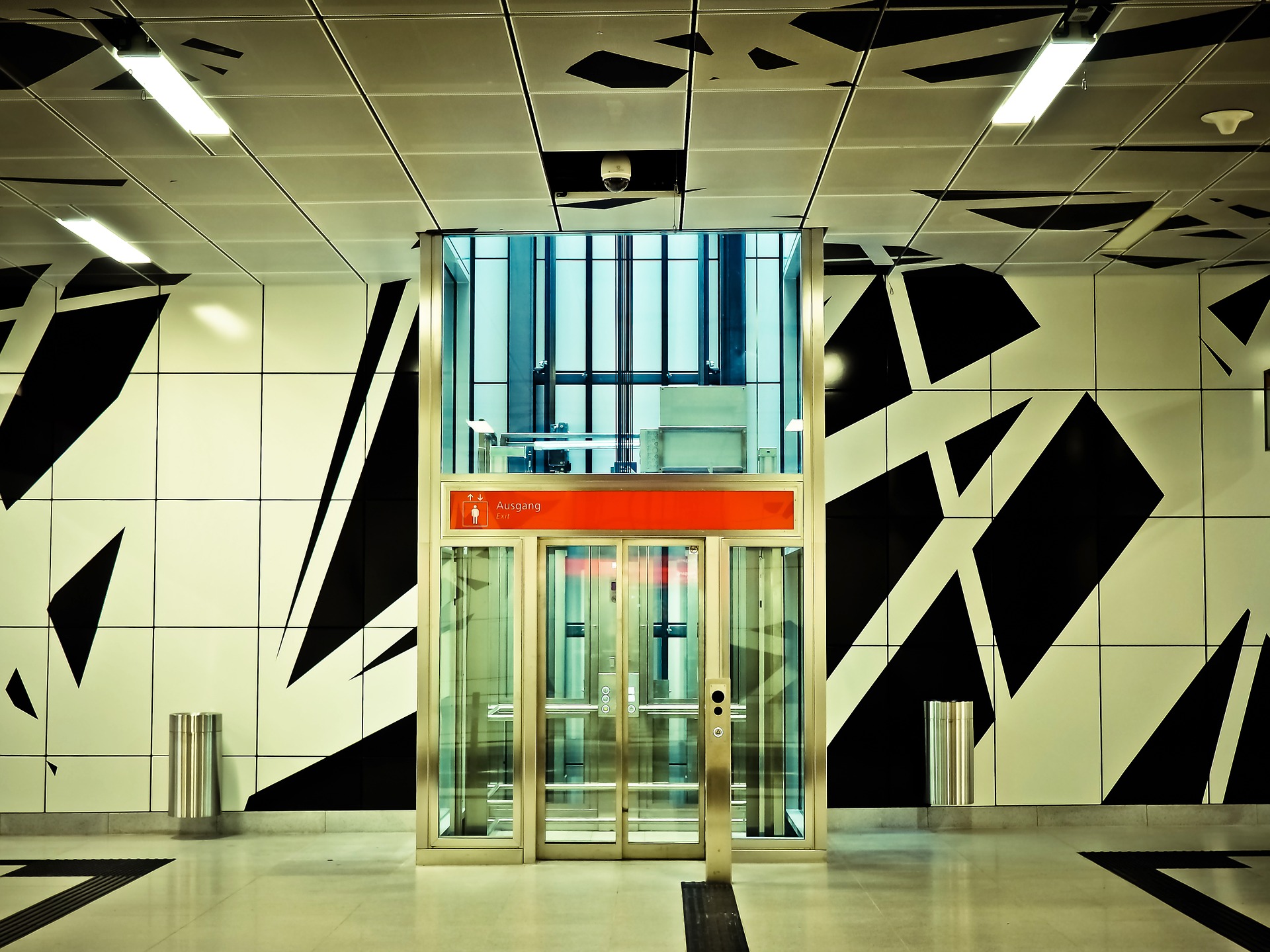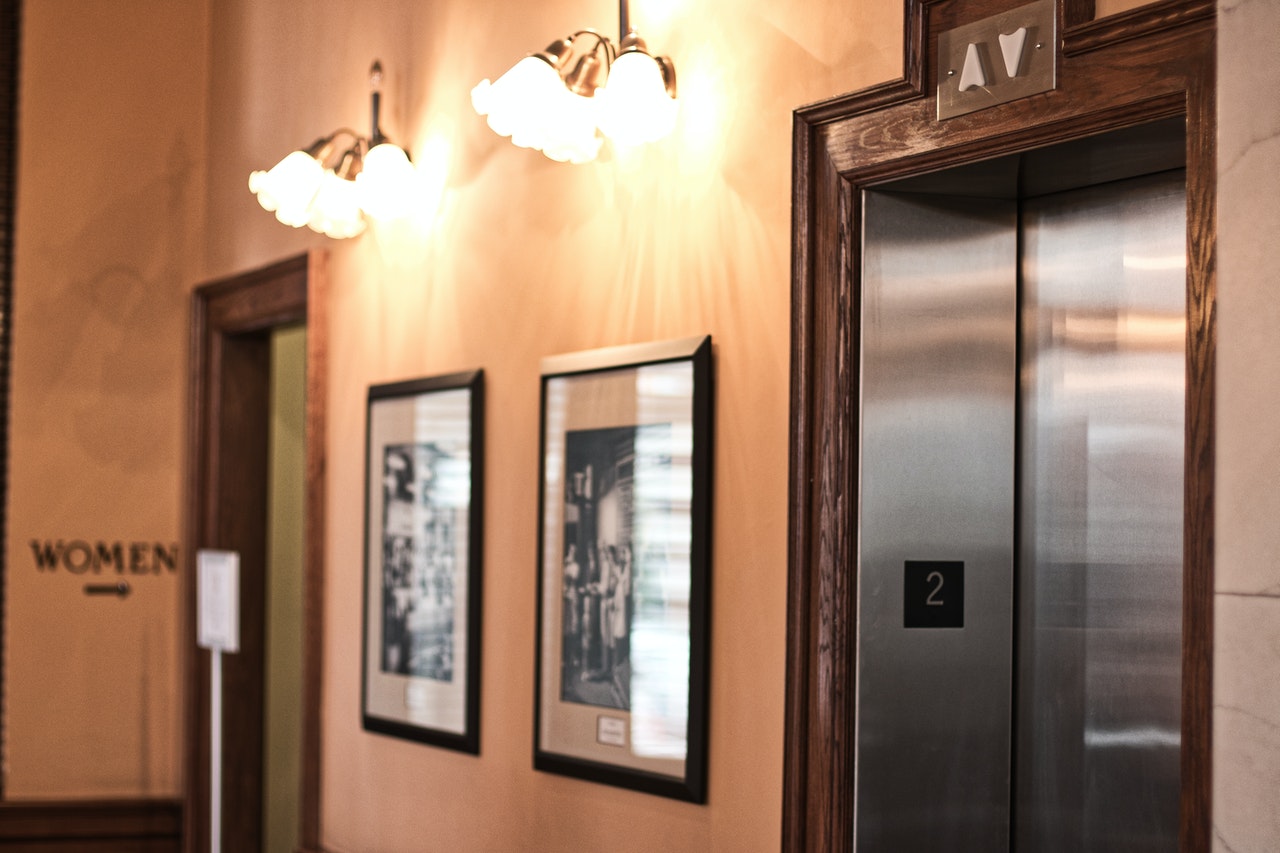To ensure proper operation and avoid water leakage, make sure you check the operation of all openings and vents in the machine room.
You should make this part of your routine maintenance. This will ensure that the vents work properly to provide ventilated airflow and prevent rain from blowing through them. To prevent water from leaking, we also need to seal and caulk all doors and vents. Corroded metal doors should be replaced. A corroded metal door might not be fire-resistant and may not have the structural integrity to withstand gale-force winds or higher wind speeds.
To ensure proper operation, check all alarms, sump pumps, and float switches.
This procedure should be included in a regular P.M. routine and does not require any explanation. However, not all elevator pits are equipped with float switches. These switches are typically located in elevators that are within a flood zone. This vital device protects the elevator from being damaged or unable to operate in the event that the pump fails or the pit floods. Call your elevator contractor if you’re unsure if your elevator has this device.
 Prepare for Hurricanes
Prepare for Hurricanes
All sump pumps, alarms in lift spare parts, and float switches should be inspected.
This procedure is recommended as an addition to your regular P.M. routine. When a hurricane warning has been issued, this should be done. Equipment can fail at the worst times. The failure of pumps caused very little flooding in the county’s pits during the 2000 “No-name Storm”, and these were the only units that were damaged.
To prevent water infiltration, close all openings and vents at the top of the hoistway or machine room.
Although this may seem obvious, adequate ventilation is essential for the elevator machinery. If your machine room is air-conditioned, there should be no vents in the room unless you need them for an emergency. Ambient ventilation, whether powered or passive, should only be considered after the facility is prepared. Equipment can heat up faster than you think. Hoistway ventilation isn’t as important and can be done early. This is not a good idea for fire protection. It should be put on before the storm and taken down after it has passed. Installing it in a way that allows ventilation is possible, such as a cover over exterior vent grilles, is preferable. This will prevent water from entering the space. Not all hoistway vents are easily accessible. To prevent rain from entering, it is important to have permanent covers or hoods designed. Hoistway vents can be accessed from the roof because they are located at the top end of the shaft. A cover can be installed by either your elevator contractor or qualified building maintenance personnel, if necessary.
Sandbags should be placed at the bottom of all elevators that are open to the atmosphere.
This would render the elevator inoperable. It is best to do this last preparation before turning the elevator off. This is required in areas where elevators have open entrances to the atmosphere.
Hurricane
Run the elevator to the center of the hoistway, and pull the main fuse in the machine room (not elsewhere).
This should be your last action during the warning phase before you evacuate the building. This should be done by buildings designated as ‘hurricane safe”, which will host some personnel, just before the winds reach 45 MPH. As a compromise, we recommend the middle of the hoistway.
To protect the elevator as well as the counterweight equipment, the best place is right below the top landing of most traction elevators. Except in basements, the traction elevator should always be located two floors below its top.
To minimize damage to hydraulic elevators, they should be parked on the top floor. If the elevator entrances in an unenclosed elevator lobby are open to the atmosphere, the best place to park is the middle landing.
Three purposes are served by disconnection of the power:
- This prevents unauthorized persons from taking the elevator from your designated parking area.
- This prevents equipment from being damaged by short circuits caused by wet circuitry. Most equipment can be quickly cleared out and restarted by competent mechanics once it has dried.
- Equipment will be protected from voltage surges, spikes, and dips that result from lightning strikes or power line shorts caused by wind.
- Closed doors are permitted in park elevators
This is a fairly obvious statement, but there are many reasons.
- You can prevent debris from getting into the hoistway by ensuring that windows do not break when the elevator is parked.
- It is common for hydraulic elevators to have oil leakage around their jack packing. If an elevator is left to settle for more than 24 hours, it may settle by a few inches or more. A door that is open would cause problems.
- We don’t want anyone to try and open the doors manually, and possibly get trapped.
- Avoid using the elevator in a hurricane.
This should be obvious, but we still hear of people trapped in storms. This is usually due to either poor building management or trying to make emergency repairs to the building.
One example: A County building manager was riding the service elevator to the top of a floor to fix broken windows in one our high-rise buildings during Hurricane Andrew. Despite being in downtown Miami, there were significant high winds. The elevator shaft was hit by so much wind that the motor was unable to move and the circuit breaker was blown. The elevator would have trapped the people trapped if it had not been located near an area where they could escape. This happened at least 12 hours. The incident could have lasted longer as we were unable get service personnel to begin repairs until after 3 p.m., 18 hours after the incident.
 After Hurricane
After Hurricane
For an indication of water, inspect the elevator pit, cab, and machine room. If water is detected, do not turn on the mainline breaker.
Call your elevator contractor if water is discovered.
You should not energize the main power line until you can determine if the water is a danger to equipment or life. Building management must exercise good judgment in this instance. Contact your elevator contractor if you have any questions.
The elevator can be operated if there is no water in the pit or near any equipment. It is possible to operate the elevator if water has escaped through the vents in the elevator room or under the door. The elevator can be operated if water is found in the cab, but it has not escaped from above. Do not run the elevator if water conditions are found above the cab or any other part of the equipment.
You should take extra precautions for buildings with basements. You should not turn the elevator on until you have checked the basement.
One example: Two Coral Gables police officers almost lost their lives after they took an elevator to the ground floor in order to get up into a building for an emergency call. The electric system went down and the elevator called for help. It automatically sent the elevator to the basement. There, the doors opened automatically, flooding the car. They were able to swim to safety. New York’s emergency personnel were not so fortunate. All over the globe, people drown in elevators. Once the elevator hits the water, the victims are rendered helpless.
If the power goes out, do not try to start an elevator or call for service.
You don’t want your elevator contractor to be called if you don’t have power. If you have a generator in your building and some or all of the elevators aren’t connected to it, don’t call until the generator turns off and all normal power has been restored.
All normal power is the key point. There may be situations where some lights in a building are on but not others. This could be due to a loss of power from one or more of the three-phase phases. The elevators won’t work if there aren’t all three phases present in commercial buildings. Some elevators might not have a voltage or phase monitor, and trying to get it to work will cause damage that is not covered by our maintenance agreements. You will also be charged extra for trouble calls if there is no power.
 Take Note
Take Note
Access to equipment and the availability of equipment for those with disabilities who cannot climb stairs.
It is important to consider the impact that the inability to access elevators after a storm will have on those who are unable or unable to climb stairs. The policy to shut down elevators before the storm should be communicated to building occupants. If possible, they should also be informed when the elevator will actually be shut down.
The ADA requires reasonable accommodations for persons with disabilities. This might mean that people with disabilities cannot use elevators and must register with the building management. Tenants with disabilities might be made aware by reasonable accommodation that they can call 311 or 305-468-5900 to get information about County shelters.
A reasonable accommodation could include tenants being notified when they plan to leave the building. This would ensure that there is elevator service to the ground level so they can get to the shelter they need. It is important to remember that shelters are opened before elevators shut down. You might consider reasonable accommodation, such as ensuring that the shelters located on the lower floors of your building are accessible to tenants with disabilities.
Reasonable accommodation does not mean that the elevator is allowed to be used at times when it is unsafe. It is difficult to decide when to shut down an elevator before a storm. This decision must be made in a way that balances the safety of those who can’t climb stairs and the need to keep the equipment safe so it will still be accessible after the storm passes. An elevator should never be used during a hurricane. Check out the cases. Elevator service should be restored as soon as possible after the storm.





